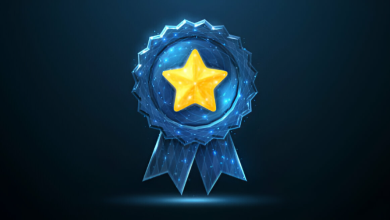
Introduction: What Is Coyyn.com Digital Money and Why It Matters
In an increasingly digital-first economy, the rise of smart, decentralized, and secure financial technologies has created an urgent need for platforms that are both user-centric and future-proof. One such platform quietly disrupting the space is Coyyn.com digital money—a financial ecosystem engineered for modern users who demand security, agility, and transparency in their digital transactions.
But Coyyn.com digital money isn’t just another crypto-based system or fintech startup. It represents a bold step toward redefining how digital assets are created, stored, and exchanged in a way that is secure, scalable, and trusted.
This article offers a comprehensive look at Coyyn.com digital money, exploring what it offers, how it differs from conventional systems, and why it’s gaining serious attention from fintech experts, enterprise developers, and individual users alike.
What Exactly Is Coyyn.com Digital Money?
Coyyn.com digital money is a secure, blockchain-based infrastructure designed to facilitate digital currency issuance, storage, and transfer. It’s engineered for governments, financial institutions, and enterprises looking to implement scalable, customizable digital monetary solutions—without compromising compliance, speed, or user control.
Unlike typical cryptocurrency platforms, Coyyn.com digital money combines the strengths of blockchain with bank-grade regulatory frameworks. Its modular system allows for both centralized and decentralized configurations, making it uniquely adaptable to varied regulatory and organizational needs.
Core Features:
- White-label digital currency solutions
- Real-time transaction tracking
- Bank-grade security protocols
- Digital wallet issuance and management
- Scalable architecture for high transaction volumes
- Cross-border transaction functionality
Key Takeaways: Why Coyyn.com Digital Money Stands Out
- Purpose-Built Infrastructure: Designed specifically for digital currency issuance and ecosystem deployment
- Trusted by Institutions: Tailored to fit the needs of central banks, financial institutions, and large enterprises
- Highly Scalable and Secure: Supports real-time, high-volume transactions with advanced cryptographic security
- Multi-Purpose Platform: Enables retail, commercial, and government-backed digital money implementations
- User-Centric Experience: Simple onboarding, customizable interfaces, and compliance built-in
How Coyyn.com Digital Money Works
1. Digital Currency Issuance
At the heart of the platform is a robust issuance engine that allows institutions to mint and manage digital currencies. Whether for public use (like central bank digital currencies or CBDCs) or internal corporate transfers, Coyyn.com digital money provides the tools to securely launch and operate digital money systems.
2. Wallet Management
Coyyn.com offers integrated wallet systems that institutions can white-label and deploy to users. These wallets support multi-currency storage, real-time updates, QR-code payments, and full KYC/AML compliance out of the box.
3. Transaction Engine
The transaction framework ensures fast, secure, and traceable transfers between wallet holders. Transactions are logged on a tamper-proof ledger, making audits, reporting, and transparency seamless.
4. Compliance and Regulatory Alignment
A standout feature of Coyyn.com digital money is its commitment to legal and financial compliance. Built-in features include KYC/AML support, anti-fraud detection, and transaction screening modules for regulated environments.
Coyyn.com Digital Money vs Traditional Financial Systems
To better understand the innovation behind Coyyn.com digital money, here’s a detailed comparison with conventional banking and digital payment systems:
| Feature | Coyyn.com Digital Money | Traditional Banks | Crypto Exchanges |
|---|---|---|---|
| Currency Issuance | ✅ Institutional or National | ✅ National Only | ❌ N/A |
| Compliance & Regulation | ✅ Built-In KYC/AML | ✅ High | ⚠️ Varies |
| Real-Time Transactions | ✅ Instant Settlement | ❌ Delayed | ✅ Often Instant |
| Digital Wallet Integration | ✅ Native | ❌ Limited | ✅ Yes |
| Transparency & Auditability | ✅ Tamper-Proof Ledger | ❌ Restricted | ✅ Public or Private Chain |
| Cross-Border Payments | ✅ Seamless & Cost-Efficient | ❌ Expensive & Slow | ✅ But Less Regulated |
| Scalability | ✅ High | ❌ Limited Infrastructure | ✅ Varies by Platform |
Ideal Use Cases for Coyyn.com Digital Money
✔ Government-Backed Digital Currencies (CBDCs)
National banks seeking to digitize their currency systems can use Coyyn.com digital money as a foundation for fast, transparent, and controlled monetary issuance.
✔ Commercial Banking Systems
Banks can leverage Coyyn’s white-label capabilities to offer digital wallets, reduce friction in internal transfers, and modernize their transaction workflows.
✔ Cross-Border Payment Networks
Coyyn.com digital money enables faster and more cost-effective international remittances, helping fintech firms or trade organizations bypass legacy SWIFT bottlenecks.
✔ Corporate Treasury Management
Large enterprises can use the platform for internal cash flow management, supply chain settlements, and tokenized incentives across departments and partners.
Bullet Summary: Coyyn.com Digital Money in 60 Seconds
- Institutional-grade digital money solution
- Fully compliant with global financial regulations
- Fast, low-cost cross-border transaction support
- Customizable digital wallets and ecosystems
- Designed for governments, banks, and large organizations
- Future-ready and blockchain-secure infrastructure

FAQs About Coyyn.com Digital Money
Is Coyyn.com digital money a cryptocurrency?
No. Coyyn.com digital money is a platform for issuing and managing digital currencies. While it uses blockchain, it’s tailored for institutional and enterprise use—not for retail cryptocurrency trading.
Can regular users access Coyyn.com digital money?
Not directly. Coyyn.com works with banks and institutions that deploy custom-branded digital wallets and apps built on Coyyn’s infrastructure.
How is Coyyn.com digital money different from Bitcoin or Ethereum?
Bitcoin and Ethereum are decentralized public cryptocurrencies. Coyyn.com digital money, on the other hand, offers regulated and compliant digital money tools for centralized and hybrid deployments.
Is the platform secure?
Yes. Coyyn.com employs advanced encryption, identity verification, and ledger-based transaction tracking to ensure system integrity and data privacy.
Does Coyyn.com digital money support multi-currency functionality?
Yes. The platform supports multiple digital currencies and allows institutions to issue and manage different denominations or tokens based on their needs.
Conclusion: Why Coyyn.com Digital Money Deserves Your Attention
In a world racing toward digital transformation, Coyyn.com digital money stands at the intersection of innovation, security, and scalability. It doesn’t seek to replace traditional finance—it’s engineered to modernize it.
Whether you’re part of a central banking team, lead digital transformation at a fintech enterprise, or simply want to understand where the future of regulated digital money is heading, Coyyn.com offers a robust, modular, and forward-thinking solution.
If you’re exploring the next frontier of institutional finance, Coyyn.com digital money is a name you need to know. It’s not just a platform—it’s the infrastructure for the next generation of monetary systems.


